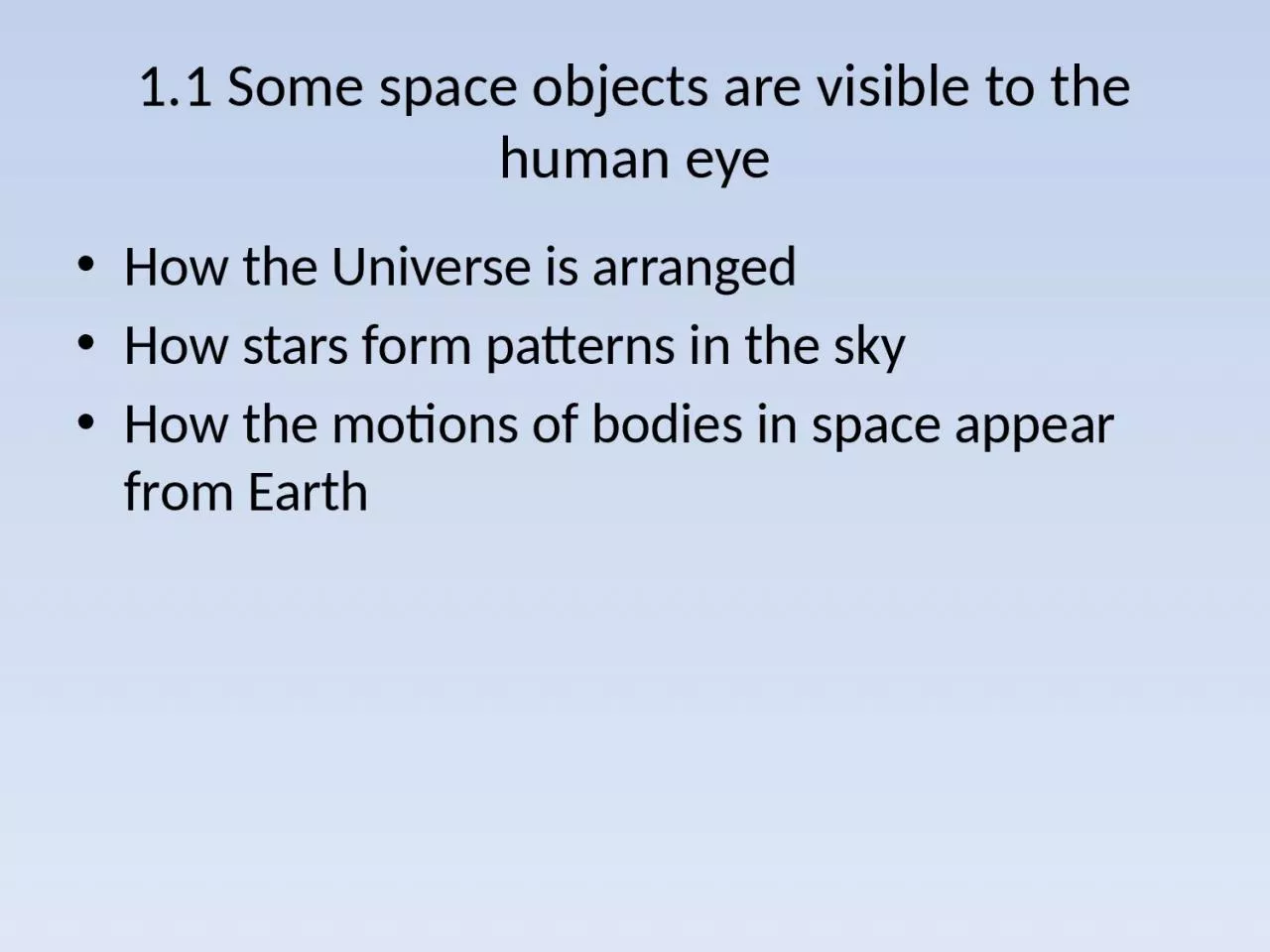PPT-1.1 Some space objects are visible to the human eye
Author : deena | Published Date : 2024-02-09
How the Universe is arranged How stars form patterns in the sky How the motions of bodies in space appear from Earth Vocab Orbit the path of an object in space
Presentation Embed Code
Download Presentation
Download Presentation The PPT/PDF document "1.1 Some space objects are visible to th..." is the property of its rightful owner. Permission is granted to download and print the materials on this website for personal, non-commercial use only, and to display it on your personal computer provided you do not modify the materials and that you retain all copyright notices contained in the materials. By downloading content from our website, you accept the terms of this agreement.
1.1 Some space objects are visible to the human eye: Transcript
Download Rules Of Document
"1.1 Some space objects are visible to the human eye"The content belongs to its owner. You may download and print it for personal use, without modification, and keep all copyright notices. By downloading, you agree to these terms.
Related Documents














